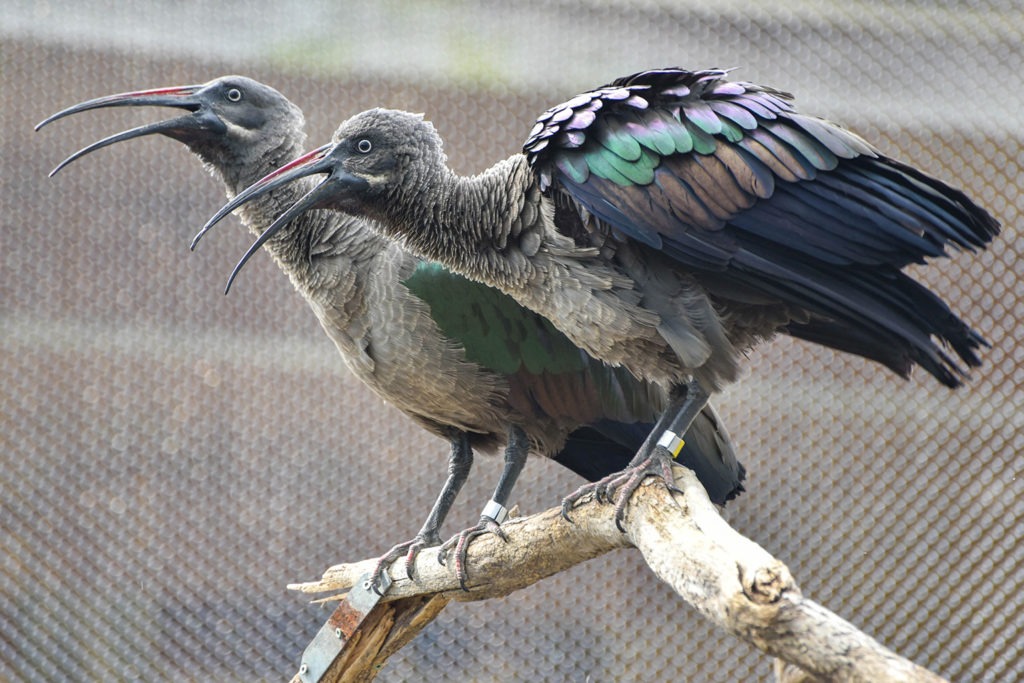Overview
“Where I Live”
Hadada ibis are common throughout sub-Saharan Africa. They prefer moist grasslands, marshes, and wetland edges. They are also attracted to irrigated farmland.
“How I Live There”
Hadada ibis are wading birds that live at the intersection of wetlands and grasslands. They roost at night in groups of up to 100 and normally remain at the same roost site year-round. During the day, they forage in pairs or in small groups of up to a few dozen birds.
A subtly beautiful grey-brown bird with iridescent green and purple wing patches, the hadada ibis spends much of its time probing for prey in mud and shallow water. It uses its long, curved, and highly sensitive beak to bring up food from the muck. The hadada ibis is a tactile feeder, meaning that it depends more on touch than sight to find prey. It eats mainly insects as well as crustaceans, worms, other invertebrates, and small reptiles.
“Making My Mark”
Hadada ibis are the most common ibis in Africa. They are often seen in the vicinity of human settlements and frequently forage in or at the edges of agricultural fields. They are welcome interlopers because as they probe for prey with their long bills, they leave holes in the ground that help aerate and turn the soil. They also eat insects that might otherwise damage crops.
“What Eats Me”
Once they reach maturity, hadada ibis have few natural predators other than humans. However, their eggs and young offspring are vulnerable to a variety of nest predators, including genets, monkeys, and monitor lizards.
Raising Young
Hadada ibis build basket-shaped nests of sticks and twigs above ground or water in trees, bushes, or on man-made structures. They are monogamous birds and solitary nesters, and the same breeding pairs tend to return to the same nest sites each year. Females lay 1-5 eggs per clutch. Males and females take turns incubating the eggs for a period of 25-30 days. Chicks fledge after about 40 days and become independent within two months of hatching.
Conservation
Hadada ibis are classified as a species of “least concern” by the IUCN, the world’s leading conservation organization. At the start of the 20th century, they were hunted to near extinction in parts of their range but with legal protection they have made a tremendous comeback across a wide range. The greatest threat to this species now is prolonged drought resulting in food scarcity.
Taxonomy
- Kingdom: Animalia
- Phylum: Chordata
- Subphylum: Vertebrata
- Class: Aves
- Order: Pelecaniformes
- Family: Threskiornithidae
- Genera: Bostrychia
- Species: hagedash


